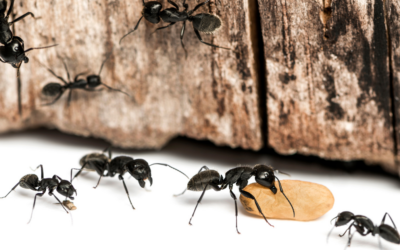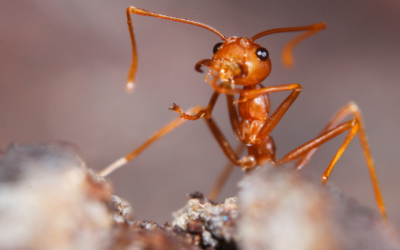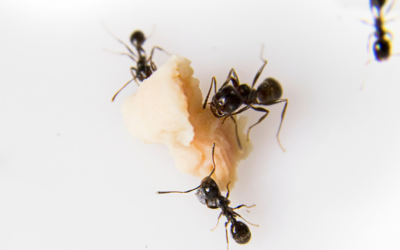Carpenter ants are certainly a concern. But is this because they bite? Or because they chew through wood and damage your home?
Unfortunately, Texas carpenter ants are an issue. But do you need to worry about carpenter ant bites? What do you need to do if you find a carpenter ant nest? And how do you get rid of carpenter ants?
What is a carpenter ant?
Carpenter ants are large and vary in color from red to black, depending on the species. In natural environments, carpenter ants live in moist, hollow, and decaying wood, where they create nests.
They get their name from how they damage the wood when creating tunnels to their nests, but unlike termites, they do not eat the wood.
Carpenter ants must leave home to find food—usually sweets, oils, and meats. A carpenter ant colony may contain over 10,000 ants, and they love wood exposed to excessive moisture.
Signs of carpenter ants include small piles of wood shavings around your home, winged ants coming from your ceiling, trails of ants marching toward your home, and even piles of dead ants.
They are not termites, though they are often confused for those insects and other ant species. However, these insects still make life difficult for humans.
Carpenter ants versus other red ants
While there are various types of red ants, it is important to distinguish between a red carpenter ant and other red ants.
A carpenter ant may bite in defense if its nest is disturbed, though they generally don’t bite people. Carpenter ants have strong mandibles, used for tunneling through wood, and the ability to spray folic acid, the same acid identified in bee stings. Fire ants are much more aggressive.
When a carpenter ant bites, the skin might break with a strong sense of pain and prolonged burning sensation. Treat bites with antibiotic ointment or a cold compress. However, if you notice an allergic reaction, seek medical treatment immediately.
Bites are not your biggest concern.
While a carpenter ant may bite in self-defense, a single fire ant can sting multiple times. Multiple bites can lead to infections, severe allergic reactions, and even death.
While neither pests’ bites are a pleasant experience, a carpenter ant is more likely to cause harm to your home than pose an immediate threat to human health.
This bug doesn’t want to feed on you, but it is more than happy to live in your house.
Is a carpenter ant as big of a threat as a termite?
Just because they aren’t eating the wood like a termite colony, this is still a species that causes damage and is difficult to control.
With colonies of over 10,000 ants, the severity of the damage can accumulate to thousands of dollars. The longer the infestation is left unchecked, the more damage caused to your home. The best way to treat the issue is to call a pest control company.
What to do if you have carpenter ants
If you suspect a carpenter’s ant infestation, it is crucial to act fast. The size of these ant colonies can grow rapidly, leading to damaged wood as they build nests.
Although there are home remedies and do-it-yourself methods, they are generally ineffective against these pests, and new colonies can spring up in their place. They likely made their way to your home from parent colonies by crossing low-hanging tree branches or through utility pipes that are not sealed.
A pest control professional knows what to look for, can eliminate your ant problems, and can help prevent future infestations.
Contact the experts at 855Bugs for a free inspection today.




